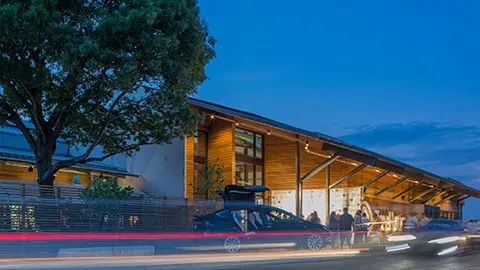What Can an EV Power?
When a tornado knocked out power in Joe Erickson’s neighborhood, his electric vehicle became more than just a car – it kept his family running with minimal interruption until power was restored. Joe owns a Kia EV6, which he purchased in late 2022. Like many EV owners, he knew his car had Vehicle-to-Load (V2L) capability but had never tested it. However, the powerful storm in August 2024 was an opportunity to put it to use.

How Long Can You Power a House Using V2L?
V2L allows electric vehicles like Joe’s EV6 to act as a portable battery, rerouting the energy normally used to power the motor to household devices. After the storm hit, Joe connected his EV6 to his fridge, phones, laptops, and even ran an air fryer for lunch. “After running everything for about 12 hours, I've gone from 73% charge to 68%,” Joe explained, noting that the battery drain was minimal. This method gave him enough power to last at least a week. And if the EV’s charge ran low, he could simply drive to a nearby fast charger, as many commercial charging stations quickly regain power after storms.
Joe’s experience underscores a growing conversation in the EV world about “bidirectional charging” technology, which allows vehicles to send power back out, rather than just storing it. Bidirectional charging can be used in various ways, from V2L (Vehicle-to-Load), like in Joe's case, to more advanced systems like V2H (Vehicle-to-Home) and V2G (Vehicle-to-Grid), where an EV’s stored energy can support a home or even help stabilize the electrical grid.

How Does V2L, or Bidirectional Charging, Work?
Bidirectional charging works by inverting the direct current (DC) stored in the EV battery into alternating current (AC), the type of power used by homes and the grid. Not all EVs have this capability, but some, like the Kia EV6, Hyundai Ioniq 5, Rivians, and Ford F-150 Lightning, are equipped with V2L functions, allowing them to power household appliances directly. Other vehicles, such as the Nissan Leaf and Mitsubishi Outlander PHEV, support V2H and V2G, enabling them to power homes or send energy back to the grid. A lot of V2H requires software and hardware to set up a “smart home,” and V2G is still largely being tested in pilot programs, but V2L is ready for prime time.
In situations like Joe’s, where power is out for extended periods, having an EV with bidirectional capabilities can be a game changer. Joe noted that while his neighbors were running noisy gas generators, his EV6 quietly powered essential devices without emissions. This type of functionality provides a significant advantage for EV owners during natural disasters, transforming range anxiety into “natural disaster calm.” With a built-in power reserve, an EV can provide a reliable energy source when needed most, something gas-powered cars can’t easily offer.
EVs as Flexible Energy Storage
As bidirectional charging becomes more common, the potential uses extend beyond individual households. Fleets of electric buses, trucks, and other vehicles could act as mobile energy storage, helping cities, companies, and organizations reduce energy costs and increase grid resilience. In the future, we may see entire areas powered by electric vehicles during blackouts or energy shortages. EVs could also contribute to stabilizing the grid by sending power back during peak demand, offering financial incentives for drivers while improving overall grid stability.
While bidirectional charging is still in its early stages, it’s clear that the technology has the potential to reshape how we think about energy storage and grid reliability. The Department of Energy is already working with manufacturers to accelerate the development of Vehicle-to-Everything (V2X) systems, and with millions of EVs expected on the roads by 2030, we could soon see widespread adoption of this transformative technology.













